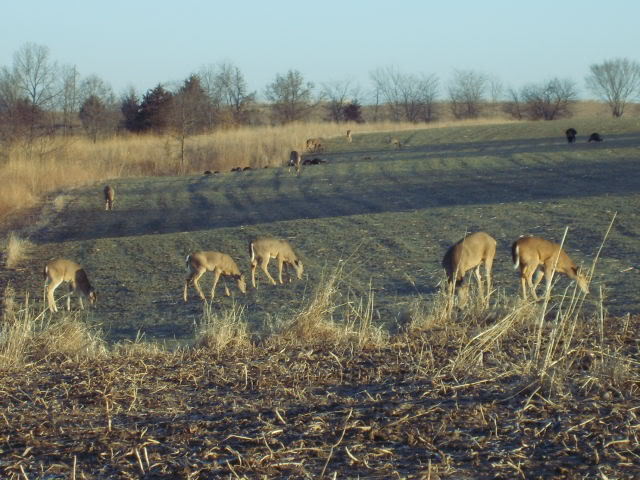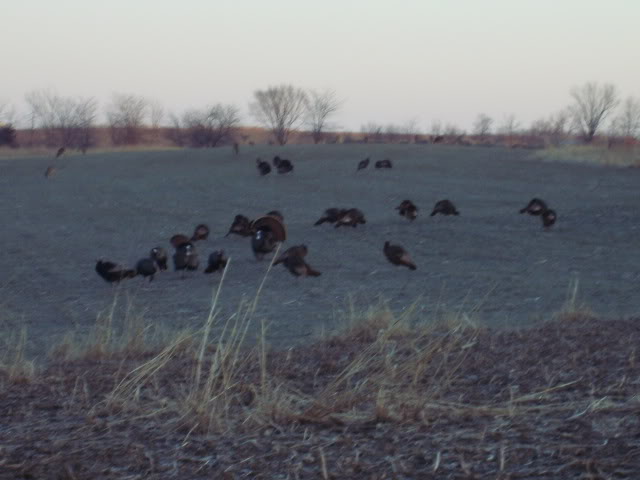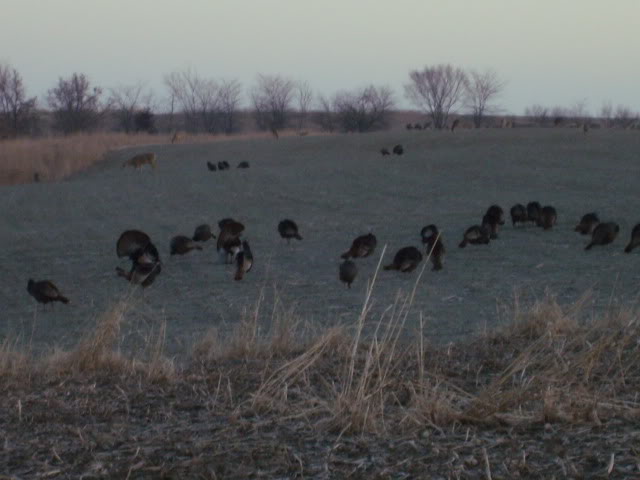Re: Cereal Grains
My buckwheat was just starting to go to seed
and a few weeds were making there way also
So I tilled it all under and re-planted buckweat. Something to think about...annual weeds and grasses make great green manure just like tilling under buckwheat...as long as you don't let them go to seed! /forum/images/%%GRAEMLIN_URL%%/wink.gif
I'll till it under again in late August and plant oats, rye and clover.
It all makes organic matter and helps enrich the soil so don't get to excited about a few weeds in a plot that your going to till under. Every time you till...more weeds will germinate, no way around it. We just want to make sure we till,clip or spray at some point so they don't leave another 100 years worth of seed there... /forum/images/%%GRAEMLIN_URL%%/crazy.gif
In the brassica thread I showed pictures of tilling under clover...whole lot easier then buying, hauling and spreading urea to provide nitrogen. And dry fertilizer will do nothing to build up your soil and create a moisture retaining nutrient rich soil.
Little tough tilling down nice plots of clover though...
This plot of red clover was covered with dew so looks a little funny but it sure tilled up nice.
This is berseem and red clover
Just like "harvesting" money
A tremendous amount of organic matter and potential N as it breaks down
It takes a little bit to till that much under (I clipped it a week earlier to shorten it some)
Just filling the top layer of soil with foliage and roots that create a literal "sponge" to hold moisture and nurtients.
Forget what it looks like...
pretty is a s pretty does
Eventually one can get it stirred in and chopped up
Remember that for the most nitrogen benefits, clover should be allowed to grow at least 6 months but even if it only has 3 months it still provides a portion of your next crops nitrogen requirements.
Add red or white clover with your late summer/early fall plots to till under next fall and you will have somewhere around 100-200#'s of free nitrogen.
Brassicas can use roughly 75#'s of N and cereal grains easily a 100#'s so most clovers could easily provide all your N requirements.
A good crop of Alice white clover plowed under the second year could provide N requirements for a crop of corn or sorghum.
4#'s of Alice seed (or any good white clover)can be at your door for roughly 20 bucks vs $160-200 for urea not to mention the soil benefits of tilling under green manure.
Alfalfa is also capable of providing up to 200 units of N and with roots that can go nearly 10 feet into subsoil it can pull nutrients from deep in the subsoil, later to be tilled in on the surface. Something to keep in mind when your alfalfa plot begins to thin and it's time to rotate to something else. Corn or brassicas would be great followups to alfalfa.
It's still way to early to plant cereal grains, late August being the best time frame so you have plenty of time to pickup some red or white clover seed from nannslayer, Welters or your favorite local seed source.
4#'s of white clover or 12#'s of red clover...till, broadcast or drill oats, rye, winter wheat, roll, seed clover, roll again...easy as pie and money in the bank! /forum/images/%%GRAEMLIN_URL%%/cool.gif
Some additional information can be gleaned from gardeners...the principal is all the same.
The Living Soil
<div class="ubbcode-block"><div class="ubbcode-header">Quote:</div><div class="ubbcode-body">The soil is a living ecosystem, although most living components are
invisible to the naked eye. As soil microorganisms, insects, and worms feed
on organic matter (e.g. compost, manure, and many manufactured fertilizers
and pesticides) nutrients become available for plant use. Their activity also
significantly improves soil structure, reducing compaction, and increasing
water and air movement.
Soil organisms do much of the work for gardeners of improving soil tilth
(suitability of a soil to support plant growth, especially as it relates to ease
of tillage, fitness for a seedbed, impedance to seedling emergence and root
penetration) and making nutrients available to plants.
Encouraging their efforts is central to building a healthy fertile soil
supportive to optimum plant growth. They require an environment that is
damp (like a wrung out sponge, i.e. – near field capacity) but not soggy (has
air – i.e.- aerobic), between 50 – 90o F. They require organic matter from
soil amendments (compost, crop residues) and/or mulch as a food source for
bacteria and fungi.
</div></div>
Soil Quality
Soil Managment
Soil Management and fertilization
Soil Biology
<div class="ubbcode-block"><div class="ubbcode-header">Quote:</div><div class="ubbcode-body">How can you benefit from better management of the soil biological community?
Reduced input costs. Less fertilizer may be needed if nutrient cycling becomes more efficient and less fertilizer is lost from the rooting zone. Fewer pesticides are needed where a diverse set of pest-control organisms are active. As soil structure improves, tillage becomes easier and potentially less costly.
Pollution prevention. Soil organisms filter and detoxify chemicals and absorb the excess nutrients that would otherwise become pollutants when they reach groundwater or surface water.
Improved yield and crop quality. Soil organisms are key to forming good soil structure or tilth. Good tilth promotes better root development and water storage. Many microorganisms enhance crop growth or reduce the activity of disease organisms that can degrade the quality of food and feed.
</div></div>
Benefits of Cover Crops for Soil Health
Soil Health menu































